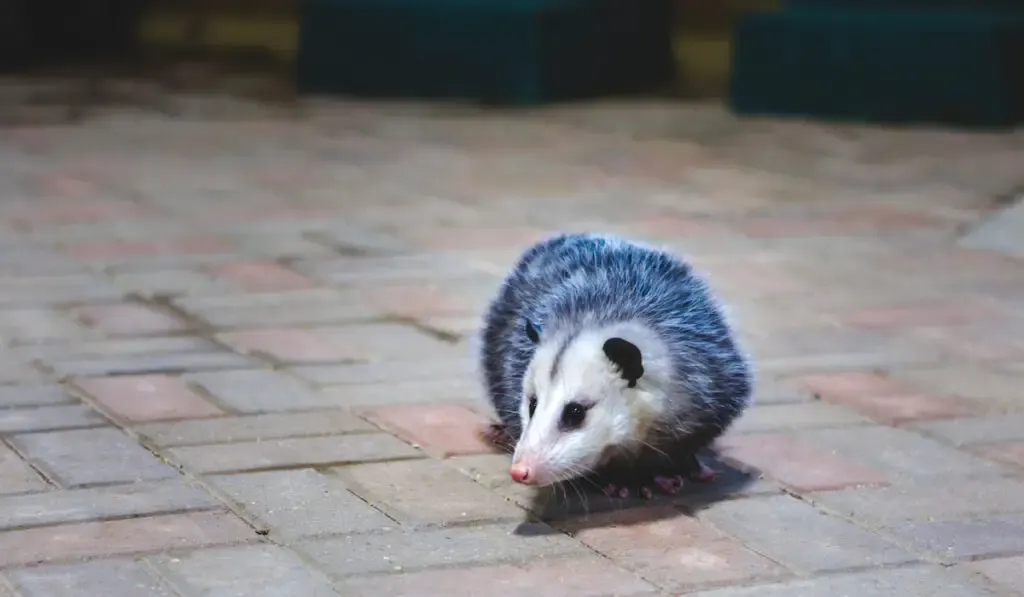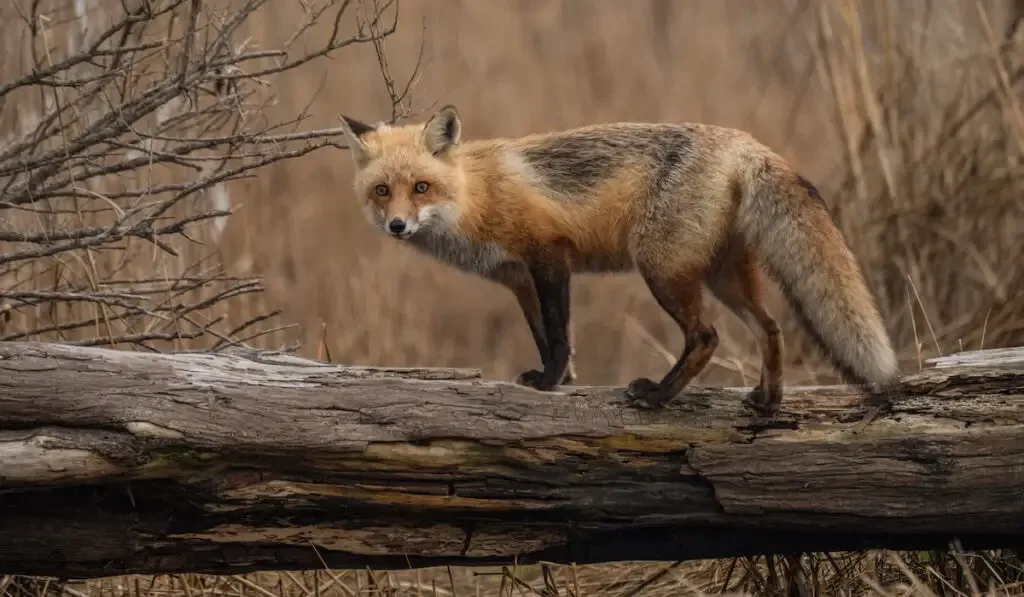When cicadas come in swarms of billions, they are fed on by pretty much every type of animal, including mammals. Some of these mammals include foxes, skunks, squirrels, woodchucks, opossums, raccoons, dogs, cats, bats, anteaters, rodents, and bobcats.
Table of Contents
What are cicadas and where are they found?
Cicadas are insects that live underground most of their life and emerge every year in late summer, but not all cicada species have this life cycle.
There are over 3,000 different types of cicadas that exist around the world today.
- Annual cicadas emerge every year in the summer and are found on every continent except Antarctica.
- 17 year periodical cicadas emerge every 13 to 17 years for 6 weeks in enormous swarms. These are unique to North America.

Are cicadas good for mammals?
- Cicadas are harmless and non-toxic to predators.
- They supplement protein and are a source of extra nourishment.
- They help support healthy population growth each year.
- Some studies even suggest that with each new emergence of periodical cicadas every seventeen years, the animal and bird populations increase because they have such an abundance of food.
13 mammals that hunt and eat cicadas
1. Skunks

Skunks can be found in many parts of North and South America. They live in forests and grasslands where they eat small animals like insects, frogs, and rodents.
Skunks can also change their diet with the season and eat berries or shrubs when abundant. These smelly little animals are natural pest controls. So when the season comes, cicadas become part of their primary diet.
2. Bobcats

Bobcats are the smallest of all wild cat species native to North American, weighing between 5 and 7 pounds. They have similar diets to their larger relatives like cougars; they hunt small mammals, birds, and reptiles.
In summer, their diet is supplemented by a large number of cicadas. These wild animals can eat a lot of the critters as their digestive system is more adapted than domesticated cats.
3. Dogs

Many dogs love to eat cicadas. According to health practitioners, these bugs are not toxic for dogs although too many of them can cause serious digestive problems.
The hard exoskeleton of cicadas is difficult to digest especially for pet dogs. It’s better to not let your dog eat cicadas freely. If you notice any stomach aches or other symptoms after a meal of cicadas, it may be time for a vet visit.
4. Cat

Cats like to chase after live cicadas and then eat their prize. Cicadas are absolutely harmless for cats but it’s better to limit the amount to avoid any digestive issues.
5. Anteaters

Anteaters are also big predators of cicadas. They have almost perfect structure and technique to swallow thousands of ants or other critters each day.
Anteaters have a long tongue, which they use to lick up the ants with their sticky saliva. Anteaters do not have teeth so they cannot chew food but instead swallow it whole.
Their stomachs have evolved to allow them to digest bugs easily without breaking down their exoskeleton or wings. So cicadas are a big treat for these animals.
6. Opossums

A fun fact: opossums are the only marsupials (mammals that carry their babies in pouches) found outside Australia.
They are found almost all over America. As omnivores, they eat both plants and animals such as insects, snakes, rodents, or fruit, including apples and grapes.
Opossums are ferocious predators of cicadas. You will usually see them scavenging for food at night because during the day they sleep up high in trees or on roofs near water sources.
7. Red Fox

Red foxes are common predators that can be found throughout the Northern hemisphere. They eat small animals like rodents, squirrels, ducks, and rabbits but one-third of their diet consists of invertebrates like crickets and cicadas.
8. Raccoons

These bushy little mammals are native to North America. Usually, the raccoon’s diet varies depending on what it can find locally.
They are omnivorous so they eat both berries, nuts, watermelons and some small animals like the frog, and rodents, but Racoons prefer to eat invertebrates like cicadas and other insects.
9. Squirrels

Squirrels are probably the most commonly sighted rodent. Most people don’t mind these cute little mammals hopping around gardens.
Squirrels are fond of nuts, berries, and seeds, but in summers when cicadas are available in huge numbers they don’t mind adding a few to their diet.
10. Rats

Rats are one a very common animal that humans come across in their day-to-day life. They live all over the world and eat anything they can find, which is why they’re so difficult to control.
Rats have a varied diet, but typically, they enjoy nuts, berries, corn kernels, and other grains. Rats will readily go for cicadas and other insects if given the chance.
11. Bats

Bats are flying mammals that live in colonies and eat a wide variety of food. About 40 species of bats live in the USA and most eat insects including cicadas as their primary source of food.
Although some species also prefer fruits and pollen, these nocturnal animals are the biggest predators of cicadas.
12. Woodchucks

Also known as groundhogs, Woodchucks are a type of rodents that live in the Northeastern United States. They can be found in forested areas and have brown fur with white stripes on their chest and back.
Though they primarily eat plant-based food such as clover, dandelions, blackberries, apples, and cornstalks, these animals love to devour cicadas when they arrive in huge numbers.
13. Bears

It might come as a surprise that bears also love to eat cicadas. They eat termites, cicadas, wasps, and other small insects. Actually, bears are omnivores, which means that they eat a variety of food including tuber roots, plants, berries, fruits, and animals such as rodents, rabbits, and fish.
Conclusion
Insects like Cicadas have been around for over 300 million years, so it is no wonder they are a big part of the food chain of mammals, birds, and amphibians.
While wild animals are used to hard diets, your pets might not be able to handle too many cicadas.
Although these insects are nontoxic to animals, make sure they don’t overdo it or they will develop GI tract infections due to the hard exoskeletons. Keep an eye on them and take care of any potential complications that arise from eating too many cicadas.
Sources
- https://www.fossweb.com/delegate/ssi-wdf-ucm-webContent/groups/public/@secmktgfoss/documents/document
- https://www.npr.org/2021/06/05/1002915358/no-you-dont-need-to-be-worried-your-dog-or-cat-is-eating-cicadas
- http://sciencenetlinks.com/esheets/periodical-cicada-survival/
- https://www.vox.com/22445929/dogs-eating-cicadas-brood-x-fish-bait-birds
- https://www.vitalground.org/grizzly-ecology-bears-insects/
- https://en.wikipedia.org/wiki/Cicada#
- https://australian.museum/blog/amri-news/flying-foxes-and-cicadas/
- https://www.wksu.org/environment-energy/2016-04-15/can-dogs-and-cats-eat-cicadas
- https://www.peststrategies.com/pest-guides/opossum-guides/what-do-opossums-eat/
- https://www.arrowexterminators.com/learning-center/pest-library/rodents/opossums
- https://thehill.com/changing-america/sustainability/environment/554328-experts-warn-emerging-brood-x-cicadas-will-spark#

